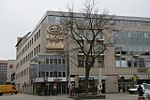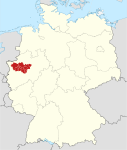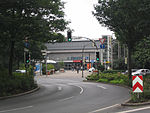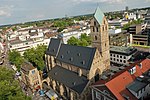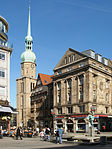Dortmunder Stadtwerke
1857 establishments in GermanyCommons category link is locally definedDortmundPublic transport operators of GermanyTram, urban railway and trolley companies

Dortmunder Stadtwerke AG is a municipal services and public transport company in Dortmund, wholly owned by the city of Dortmund. It is operating under the brand DSW21 since 2005. The number in the acronym refers to the 21st century. The development of the company began on June 19, 1857, when the Dortmunder Actien-Gesellschaft für Gasbeleuchtung was founded.
Excerpt from the Wikipedia article Dortmunder Stadtwerke (License: CC BY-SA 3.0, Authors, Images).Dortmunder Stadtwerke
Feldstraße, Dortmund Innenstadt Ost
Geographical coordinates (GPS) Address Nearby Places Show on map
Geographical coordinates (GPS)
| Latitude | Longitude |
|---|---|
| N 51.505597222222 ° | E 7.4857833333333 ° |
Address
Feldstraße 84
44141 Dortmund, Innenstadt Ost
North Rhine-Westphalia, Germany
Open on Google Maps
